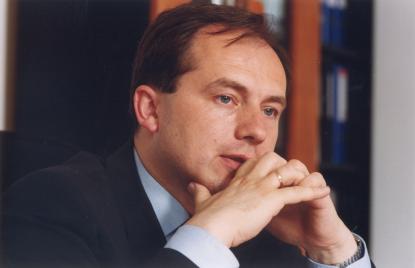2024. May 4. Saturday
House of Terror Museum - Budapest
 |
Address: 1062, Budapest Andrássy út 60.
Phone number: (1) 374-2600
E-mail: muzeum@terrorhaza.hu
Opening hours: Tue-Sun 10.00-18.00
|
The exhibition has closed for visitors.
2011.05.04. 00:00
Museum tickets, service costs:
|
Ticket
(valid for the temporary exhibitions, the permanent exhibition is not included )
|
1000 HUF
|
/ capita
|
|
Ticket for adults
|
2000 HUF
|
|
|
Group ticket for adults
(from over 20 people)
|
1500 HUF
|
/ capita
|
|
Ticket for students
(EU citizens from the age of 2 to 26 or with ISIC Card )
|
1000 HUF
|
|
|
Group ticket for students
(from over 20 people)
|
800 HUF
|
/ capita
|
|
Ticket for pensioners
(EU citizens from the age of 62 to 70)
|
1000 HUF
|
|
|
Group ticket for pensioners
(from over 20 people)
|
800 HUF
|
/ capita
|
|
Supplementary fee
(valid for the temporary exhibitions, extra ticket for the permanent exhibition )
|
500 HUF
|
/ capita
|
|
Group guide
(max. 30 people)
|
6000 HUF
|
|
|
Group guide
(2 groups, max. 60 people)
|
8000 HUF
|
|
|
Group guide
(max. 30 people)
|
8000 HUF
|
|
|
Group guide
(2 groups, max. 60 people)
|
15000 HUF
|
|
|
Audio guide
(in English, German)
|
1500 HUF
|
In his film Katyń, Andrzej Wajda revived the hero Maciej from Ashes and Diamonds as Tadeusz. As if he was trying to show us what happens to the ’damned soldier’ of the army if he tries to get on by keeping his weapons an principles that symbolised his will to fight. If he changes his name only, but remains insisted, he will be cruelly killed by the Stalinist dictatorship. Tadeusz, who also represents the spirit of freedom, will also end up on cobble stones just like Chopin’s piano that the Cossack pushed off the first floor of a palace in Warsaw during the fights in January, 1863.

The Disaster in Szmolenszk put Andrzej Przewoźnikot in the same line with Maciej and Tadeusz: their fate is the same tragic in history. Common with all those, whom Andrzej reburied in human conditions in Harkov, Katyń and Lemberg. The young historian wanted to spend his life with exactly what was offered to him after the change of social system in 1992.
At the beginning of September, on the third anniversary of the oaths of the Mazowiecki administration, the secretary-general for the Committee for Fight and Martyrdom was appointed. He reformed the office established in 1947, and added new content to it. One of the most important works in his life was the excavation of the mass graves on Katyń, Harkov and Mjednoje, and then building the cemetery. The reconstruction of the Eaglet Cemetery in Lemberg that was abraded in the 1970s was an endeavour of the same scale. It was because the graveyard had to be reconstructed at the beginning of the independence of Ukraine where people who died fighting the Ukranians and the Bolshevik were buried.
Andrzej Przewoźnik's unrivalled skill to negotiate, his diplomatic skills are demonstrated by the success: the cemetery was inaugurated in 2005. He also reconstructed hundreds of military cemeteries including Kazakhstan, Budapest, South-Africa and Narvik in Norway. He wrote articles, forewords, studies, edited publications and financed memorial tablets, statues and memorials. Some of these are the Polish-Hungarian Friendship Memorial in Győr, the Sobieski Statue in Párkányszoborra, the Felczak Memorial Tablet at the Eötvös Collage.
He organized meetings and conferences. When trying to read his offices, it would be more than a page long. And he never ceased to collect books and sources from the archives. He collected tones of documents and organized them. He was in office for over eighteen years. He was waiting for the time when he could sit down at the table in his study, after finishing all his work and duty, and learn Hungarian to be able to write about Budapest being the third capital of Poland during WWII, only using authentic sources.
The sentence, that there is no man who could not be replaced in the case of Andrzej Przewoźnik is meaningless: he is irreplaceable.

The Disaster in Szmolenszk put Andrzej Przewoźnikot in the same line with Maciej and Tadeusz: their fate is the same tragic in history. Common with all those, whom Andrzej reburied in human conditions in Harkov, Katyń and Lemberg. The young historian wanted to spend his life with exactly what was offered to him after the change of social system in 1992.
At the beginning of September, on the third anniversary of the oaths of the Mazowiecki administration, the secretary-general for the Committee for Fight and Martyrdom was appointed. He reformed the office established in 1947, and added new content to it. One of the most important works in his life was the excavation of the mass graves on Katyń, Harkov and Mjednoje, and then building the cemetery. The reconstruction of the Eaglet Cemetery in Lemberg that was abraded in the 1970s was an endeavour of the same scale. It was because the graveyard had to be reconstructed at the beginning of the independence of Ukraine where people who died fighting the Ukranians and the Bolshevik were buried.
Andrzej Przewoźnik's unrivalled skill to negotiate, his diplomatic skills are demonstrated by the success: the cemetery was inaugurated in 2005. He also reconstructed hundreds of military cemeteries including Kazakhstan, Budapest, South-Africa and Narvik in Norway. He wrote articles, forewords, studies, edited publications and financed memorial tablets, statues and memorials. Some of these are the Polish-Hungarian Friendship Memorial in Győr, the Sobieski Statue in Párkányszoborra, the Felczak Memorial Tablet at the Eötvös Collage.
He organized meetings and conferences. When trying to read his offices, it would be more than a page long. And he never ceased to collect books and sources from the archives. He collected tones of documents and organized them. He was in office for over eighteen years. He was waiting for the time when he could sit down at the table in his study, after finishing all his work and duty, and learn Hungarian to be able to write about Budapest being the third capital of Poland during WWII, only using authentic sources.
The sentence, that there is no man who could not be replaced in the case of Andrzej Przewoźnik is meaningless: he is irreplaceable.
